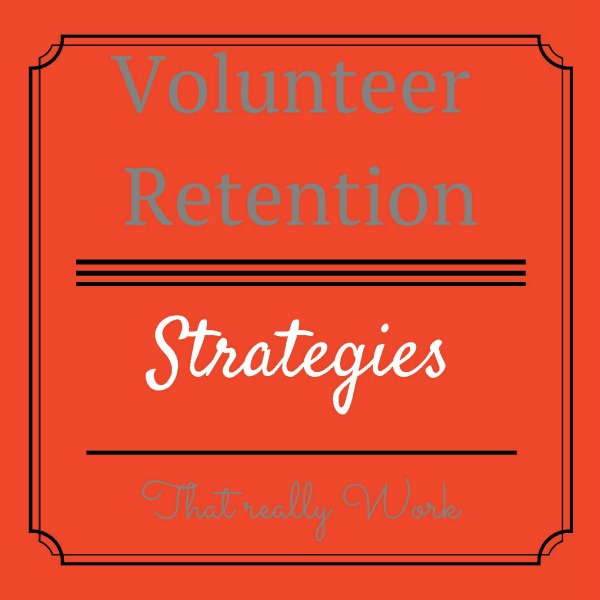Volunteer Retention Strategies that Work

In his article The Top Seven Reasons Volunteers Quit, Thomas W. McKee shares some of the most common reasons organizations suffer from declining volunteer retention rates. The most commonly used excuse volunteers give for quitting: “I’m just too busy to volunteer.” McKee challenges the belief that we are truly “too busy” and delves deeper into the real reasons why volunteers quit. We’ve added three more reason’s to his list. Here they are.
Reasons Volunteers Quit
- Lack of flexibility with volunteer opportunities and scheduling of volunteers
- Wasted time spent in unproductive and unnecessary meetings
- Poor communication
- Lack of professionalism
- Belief that the volunteer’s time is wasted and not making a difference
- Lack of feedback from leadership regarding performance
- Volunteer skills are not matched with tasks and assignments
- Failure to train and invest in volunteers
- Failure to provide strong leadership
- Failure to measure the value of volunteers and lack of recognition for contributions
Knowing the reasons why volunteers quit is just the first step in your organization’s volunteer retention strategy. How can you avoid making the mistakes that lead to a high volunteer turnover rate? Here are some practical tips that successful organizations use to keep their volunteers happy. Stated simply, happy volunteers keep doing what they are happy doing.
Volunteer Retention Strategies that Work
Empower & Excite- Volunteers need to feel empowered in order to effectively represent your organization.
- Provide all necessary resources so that volunteers can complete the work.
- Engage your volunteers by providing meaningful opportunities and tasks.
- Keep volunteers informed of your fundraising goals and the progress that has been made.
- Share success stories that demonstrate the important difference they make. Mention volunteers who have made your organization successful.
- Keep volunteers updated about new opportunities that play to their strengths.
Educate through orientation and training.
- Have clearly written job descriptions posted
- Conduct an orientation that covers your organization’s mission, staff introductions and roles and program basics. This is important for volunteers to understand your organization at the macro level.
- Instill pride. Volunteers need to feel like they are as much a part of the team as your regular paid staff. Get them organization identified nametags, publish photos introducing new volunteers on social media and in your newsletter.
- Make sure volunteers are given clear instructions and timelines for each responsibility. Make sure your expectations are clearly communicated.
- Clearly communicate how volunteers will be assigned.
- Match skill sets to the work. Assign tasks and responsibilities based on volunteer qualifications.
- Cultivate and grow your volunteers for larger roles. Proper training, development and nurture of your volunteers will pay off long term and with worth the investment.
Supervise and follow up.
- Incorporate evaluations of your volunteers’ performance both by management and by the volunteer.
- Providing adequate supervision allows volunteers to have someone to come to with questions, ideas or feedback.
- Be flexible in task assignments. Find a schedule that works for each individual volunteer.
- Have your volunteers complete a satisfaction survey after 90 days. This will help you gauge their level of commitment and allow you to make changes where applicable.
- Create a community for your volunteers. Provide a way for them to stay connected with each other and to maintain open communication channels.
- Watch for volunteer burnout. Don’t overuse your volunteers by giving them too many shifts, hours or responsibilities.
- Get to know your volunteers. Tune into the volunteer’s main reason for joining your organization. Understand your volunteer’s priorities.
Reward and Repeat.
- Provide timely and ongoing recognition. Say thank you. The importance of a verbal thank you can’t be overstated.
- Thank your volunteers in a variety of ways. Not sure what to include in your volunteer appreciation letters? Read this post.
- Give them a public shout out via social media and in your newsletters and annual reports.
- Offer volunteer perks such as a free meal during their shift, free admission to your events or a volunteer appreciation event.
- Repeat indefinitely, especially step 5. Showing your appreciation is critical to the success of your volunteer retention strategy.

Volunteers are effective fundraisers because they have a personal commitment to your organization’s mission and the time to donate their skills and abilities. This makes them very convincing advocates for the collective cause. Don’t make the critical mistake of undervaluing your volunteers. Donated human “capitol” quickly adds up, making volunteers your most valuable asset. By following these volunteer retention strategies, your organization will not only see benefits in the short term, you will build long lasting relationships with your volunteers that will yield dividends long into the future.
